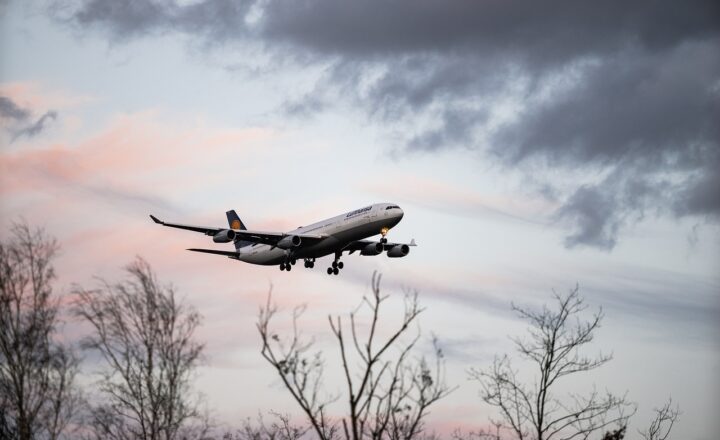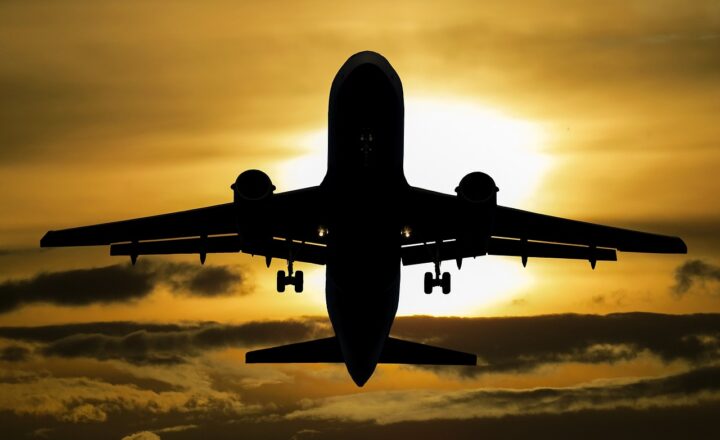The Science Behind In-Flight Wi-Fi and Why It’s So Different from Home Internet
November 11, 2024

In the modern age, staying connected has become an integral part of our lives, even when we are soaring 30,000 feet above the ground. In-flight Wi-Fi has revolutionized air travel, allowing passengers to browse the web, send emails, and even stream content while flying. However, many frequently find themselves wondering why the in-flight internet experience often feels so different from the broadband they rely on at home.
—
1. The Basics of In-Flight Wi-Fi
In-flight Wi-Fi uses one of two main technologies: air-to-ground (ATG) or satellite communication. Understanding these modalities is crucial to appreciating the differences between in-flight Wi-Fi and standard home internet.
*Air-to-Ground (ATG):** This method involves antennas installed on the aircraft that connect to ground-based towers, similar to how mobile phones connect to cell towers. When the aircraft moves, it seamlessly switches from one tower to another to maintain a steady connection.
Satellite Communication:* In contrast, satellite-based Wi-Fi relies on satellites orbiting the Earth to provide connectivity. The aircraft is equipped with antennas that connect to satellites, which relay the internet signal back to ground stations.
Both technologies aim to provide a reliable internet connection, but they differ significantly in performance and latency.
—
2. Why is In-Flight Wi-Fi Slow?
Several factors contribute to the slower speeds and higher latency experienced with in-flight Wi-Fi compared to home internet.
Latency:* Latency refers to the time it takes for data to travel from the user to a server and back. In-flight Wi-Fi typically has a higher latency than home internet due to the long distances the data must travel. For satellite connections, data must travel to space and back, which adds considerable delay. In contrast, home internet connections have shorter distances to cover, resulting in lower latency.
Bandwidth Limitations:* The available bandwidth on an aircraft is shared among multiple users. In-flight providers allocate limited bandwidth to each connected passenger, which can lead to slower internet speeds as more people log on. At home, users typically have access to higher bandwidth connections that are not shared to the same extent.
Interference:* During a flight, the aircraft encounters various atmospheric conditions, including turbulence, which can impact connectivity. Additionally, factors like altitude and speed can also affect both satellite and ATG connections, as they must adapt to changing conditions constantly.
—
3. Comparing In-Flight Wi-Fi to Home Internet
To further understand the differences, we can look at various aspects that set in-flight Wi-Fi apart from traditional home internet connections:
Infrastructure:* Home internet relies on a robust network of cables, fiber optics, and local infrastructure that can deliver high-speed connections directly to your device. In contrast, in-flight Wi-Fi must navigate through a less reliable setup with antennas susceptible to a range of challenges, from signal dropouts to interference.
Data Caps:* Many in-flight portals impose data caps or limit usage to keep the service operational for all passengers. Unlike home internet where users may have unlimited plans, in-flight services often require passengers to purchase packages to access the internet, leading to a different experience altogether.
Usage Patterns:* The way people use the internet during a flight differs significantly from their usual habits at home. Tranquil browsing, checking emails, or light social media usage is common during flights, while home users might engage in high-bandwidth activities like gaming, streaming, or downloading large files.
—
4. The Evolution of In-Flight Wi-Fi Technology
In recent years, significant advancements in in-flight Wi-Fi technology have improved the passenger experience:
Hybrid Systems:* Many airlines are now deploying hybrid systems, which combine both satellite and air-to-ground technology to optimize connectivity. This approach aims to enhance speeds, reduce latency, and provide a more reliable internet experience.
Increased Bandwidth:* Airlines are investing in more advanced technology that offers greater bandwidth capacity. This means that as technology improves, the experience of those traveling in the skies will continue to approach that of ground-based connections.
*Wi-Fi 6 Technology:** As the adoption of Wi-Fi 6 technology increases, it may offer advancements in speed, capacity, and efficiency for in-flight systems in the future. This standard is designed to handle a higher number of devices connected to the same network, which is essential during flights where passengers are all vying for bandwidth.
—
5. The Future of In-Flight Wi-Fi
Looking ahead, the future of in-flight Wi-Fi seems poised for growth and improvement. Airlines are realizing the importance of a reliable internet service during flights and are making necessary investments. Trends for the coming years may include:
Enhanced Connectivity:* Airlines will likely continue upgrading their systems to provide even better connectivity and faster speeds, aiming for a near-home internet experience for passengers.
Smart Technology Integration:* The integration of smart technology could allow airlines to manage bandwidth more efficiently, directing available resources to where they are most needed based on passenger usage patterns.
Increased Accessibility:* As technology improves, in-flight Wi-Fi is expected to become more affordable and accessible to a broader range of passengers, democratizing access to in-flight connectivity.
—
Conclusion
In-flight Wi-Fi is a remarkable innovation that allows passengers to remain connected while enjoying air travel. However, it is essential to understand the fundamental differences between in-flight Wi-Fi and home internet. Factors such as latency, infrastructure, and usage patterns uniquely shape the in-flight experience, but with ongoing technological advancements, we can hope for a future where in-flight internet feels as seamless as our connections at home. As we embark on the next phase of air travel, increased connectivity and accessibility in the skies are on the horizon, making keeping in touch while flying an increasingly enjoyable experience.







